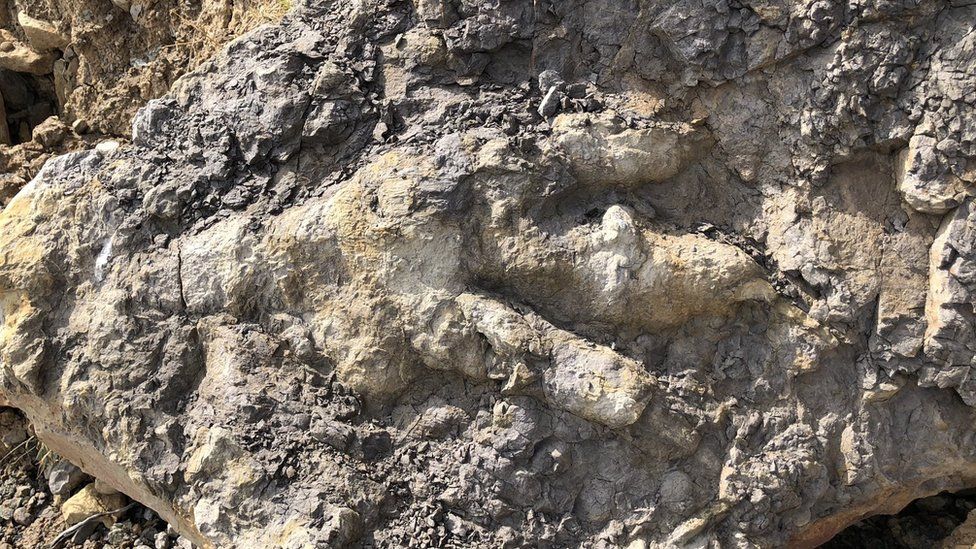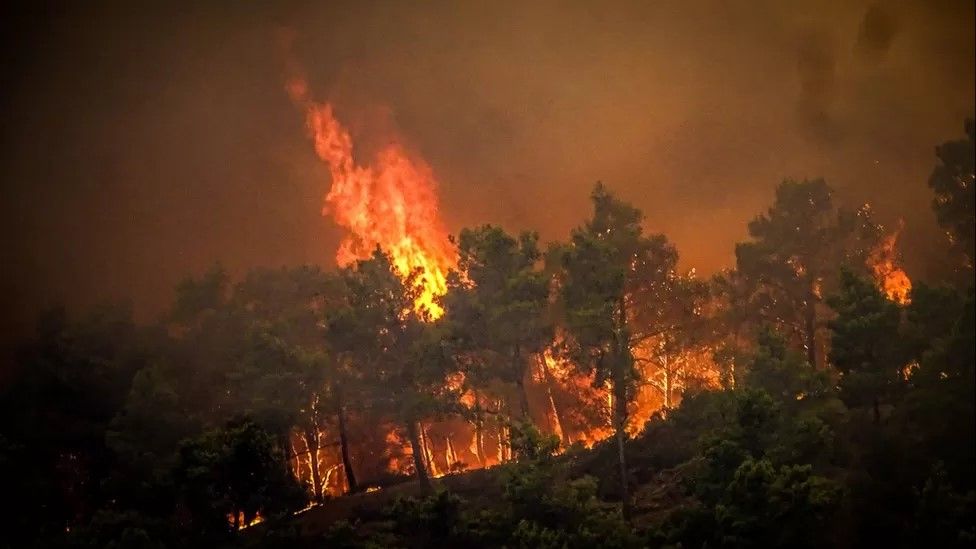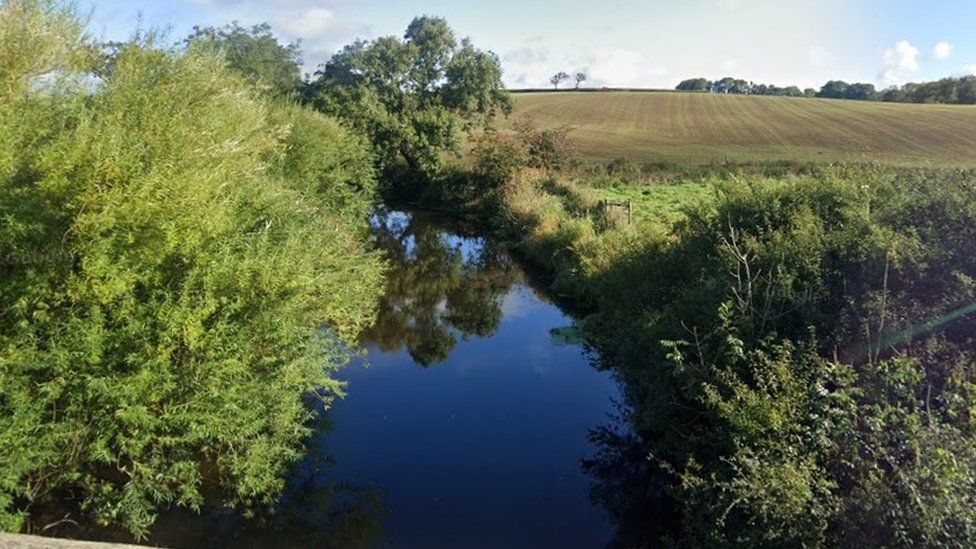According to researchers, a record-breaking dinosaur print discovered on the coast of Yorkshire may have been left by a predator taking a break 166 million years ago.
The "amazing" metre-long fossil was the largest ever found in the area, according to scientists, and was found in Burniston Bay, close to Scarborough.
The team that examined the track after it was discovered in 2021 came to the conclusion that it was made by a massive carnivore like a Megalosaurus.
At this time, the Rotunda Museum in the town will host its display.
The footprint is the biggest theropod (a clade of bipedal dinosaurs that included Tyrannosaurus Rex) footprint discovered to date in Yorkshire.
Paleontologist Dr. Dean Lomax of the University of Manchester said the "wonderful" find had revealed new information about the behavior of the carnivorous giants that once prowled the area's coast.
The large predator may have been squatting before standing up, according to the features of the footprint, he continued. It's entertaining to consider that this dinosaur may have been lazing around on a muddy coastal plain one lazy Sunday afternoon in the Jurassic. " .
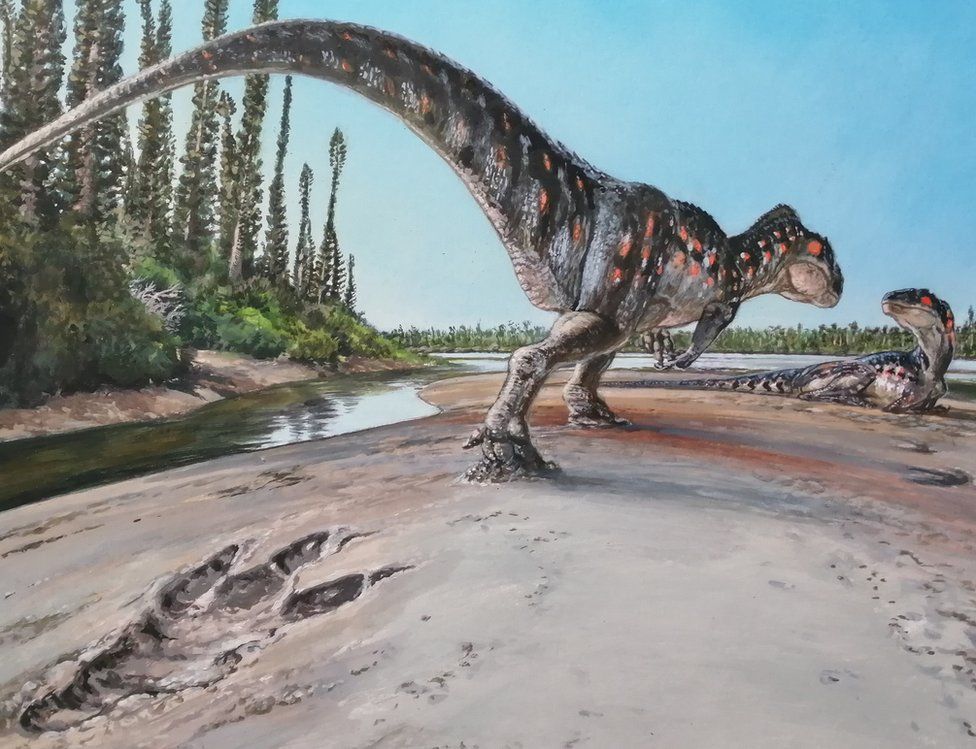
In April 2021, while shellfishing on the sand, local archaeologist Marie Wood discovered the print. She claimed that what she was seeing was "unbelievable.".
"I had to give it another look. I have occasionally encountered smaller prints while out with friends, but nothing like this," she continued.
Rob Taylor, a local fossil collector, later discovered that he had also seen the print five months earlier, when the track was not yet completely exposed.
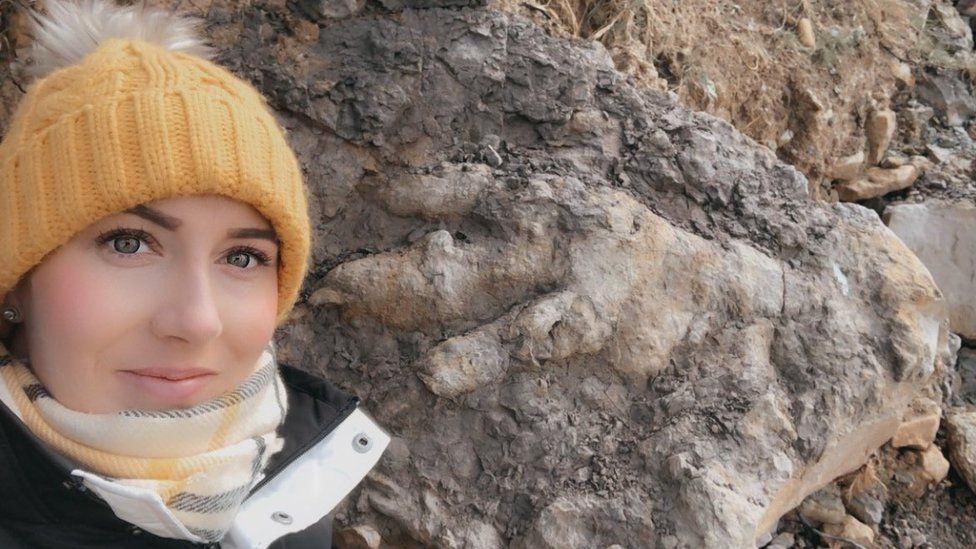
After scientists issued a warning that the delicate print was in danger of being lost due to erosion or landslips, a group of fossil hunters saved it from the shore.
It is now on display at Scarborough Museum and Galleries, which also has other dinosaur fossils on display at the Rotunda thanks to Ms. Wood and Mr. Taylor's donation.
Following analysis of the specimen, plans are being made to put it on public display in an effort to inspire the next generation of fossil hunters, according to Dr. Lomax.
The results of the study were published on Thursday in the Proceedings of the Yorkshire Geological Society journal.

